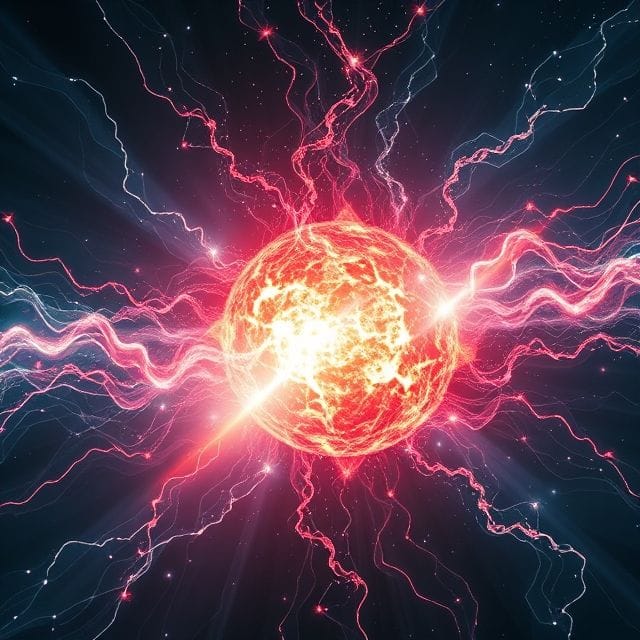Have you ever wondered what holds galaxies together or why the universe seems to expand faster than expected? Dark matter and anti-gravity might be the key! While dark matter creates invisible gravitational pull, scientists explore anti-gravity concepts and repulsive forces to understand the cosmos. Could these mysterious forces reshape our understanding of space, time, and the universe itself?
Dark Matter and Dark Energy Overview
Dark matter and dark energy are fundamental components of the universe, yet they remain largely mysterious. Dark matter makes up most of the mass in galaxies and clusters, influencing gravitational attraction, while dark energy drives the universe’s accelerated expansion. Physicists study both to explain cosmological phenomena, including the universe end and large-scale structure. Understanding these components is crucial in physics to reconcile general relativity with quantum gravity theories and to explain the behavior of ordinary matter, photons, and particle interactions throughout the universe.
What Is Dark Matter?
Dark matter is an invisible form of matter that doesn’t emit, absorb, or reflect light, making it undetectable by electromagnetic radiation. Despite being invisible, dark matter exerts gravitational effects on visible matter, influencing the structure and behavior of galaxies and galaxy clusters. It is estimated to constitute about 27% of the universe’s mass-energy content.
What Is Dark Energy?
Dark energy is a mysterious force that permeates all of space and tends to accelerate the expansion of the universe. It is thought to make up approximately 68% of the universe’s total energy content. Unlike dark matter, which has gravitational attraction, dark energy has a repulsive effect, counteracting gravity on cosmological scales. (SelfAwarePatterns)
Difference Between Matter and Antimatter
Matter consists of particles like protons, neutrons, and electrons, which make up the observable universe. Antimatter, on the other hand, is composed of antiparticles such as positrons and antiprotons, which have the same mass as their matter counterparts but opposite charges. When matter and antimatter meet, they annihilate each other, releasing energy. This annihilation process is a key area of study in physics, particularly in understanding the imbalance between matter and antimatter in the universe.
Theories of Dark Energy and Antigravity

Theories of dark energy and antigravity attempt to explain repulsive forces observed on cosmological scales. Dark energy could be linked to the cosmological constant, providing negative gravitational mass that repels matter and accelerates the universe. New antigravity concepts explore hypothetical negative energy, gravitational polarization of the quantum vacuum, and repulsive gravity effects. Physicists use these theories to understand the expansion of the universe, gravitational repulsion, and the interaction of matter vs dark energy in galaxy clusters and empty space.
Cosmological Constant Explained
The cosmological constant (Λ) is a term introduced by Albert Einstein in 1917 as part of his equations of general relativity. It represents a constant energy density filling space homogeneously. In modern cosmology, it is associated with dark energy, explaining the observed accelerated expansion of the universe. The cosmological constant is a central component of the ΛCDM model, the standard model of cosmology.
Did You Know?
Dark matter makes up 27% of the universe but interacts only through gravity.
Gravitational Repulsion vs Attraction
Gravity is traditionally understood as an attractive force between masses. However, on cosmological scales, dark energy introduces a repulsive component, leading to the accelerated expansion of the universe. This repulsive gravity, or gravitational repulsion, contrasts with the attractive gravitational force experienced locally and is a significant factor in the universe’s large-scale structure.
New Antigravity Concepts in Physics
Antigravity refers to the idea of creating a place or object that is free from the force of gravity. While true antigravity has not been achieved, theoretical physics explores concepts like negative mass and exotic matter that could exhibit antigravitational effects. These ideas are often discussed in the context of advanced propulsion systems and the manipulation of gravitational fields.
Dark Matter in Galaxies
Dark matter is essential for galaxy formation and stability, as it provides gravitational mass that ordinary visible matter lacks. Its presence explains the rotation curves of galaxies and the binding of galaxy clusters, creating scaffolding for cosmic structures. Unlike antimatter, dark matter is not antimatter and does not annihilate with normal matter. Studying dark matter and dark energy together helps physicists understand gravitational effects, matter particle behavior, and the universe’s content and energy density.
Read about Astronomer Observes Supermassive Black Hole
Role of Dark Matter in Galaxy Formation
Dark matter plays a crucial role in the formation and structure of galaxies. Its gravitational influence helps to bind galaxies together and affects their rotation curves. Without the presence of dark matter, galaxies would not have enough mass to prevent them from flying apart due to their rotational speeds. Thus, dark matter acts as a cosmic scaffold, providing the necessary gravitational pull to maintain galactic integrity.
Dark Matter and Gravitational Attraction
Unlike dark energy, which exhibits repulsive effects, dark matter contributes to the universe’s overall mass and exhibits gravitational attraction. This attraction is evident in phenomena such as gravitational lensing, where light from distant galaxies is bent by the gravitational influence of dark matter, allowing astronomers to map its distribution.
Why Dark Matter Is Not Antimatter
Dark matter and antimatter are distinct entities. While antimatter consists of particles with opposite charges to their matter counterparts, dark matter is composed of unknown particles that do not interact electromagnetically, making them invisible and detectable only through their gravitational effects. If dark matter were antimatter, it would annihilate upon contact with regular matter, releasing energy; however, no such annihilation has been observed, indicating that dark matter is not antimatter.
Energy and Negative Energy
Energy in the universe exists in multiple forms, including negative energy associated with dark energy and hypothetical exotic matter. Negative energy contributes to repulsive gravitational forces and is theorized to accelerate the expansion of the universe. Dark energy’s repulsive effect contrasts with gravitational attraction from dark matter. Understanding matter vs dark energy interactions is critical for explaining cosmological phenomena, quantum effects, and the interplay between ordinary matter and unknown matter throughout the universe.
Understanding Negative Energy
Negative energy is a concept in theoretical physics where energy values are less than zero. While not observed in macroscopic systems, negative energy is hypothesized to exist in certain quantum fields and could have implications for exotic phenomena like wormholes and the theoretical concept of antigravity. Its existence challenges conventional understanding and is a subject of ongoing research.
Did You Know?
Dark energy drives the universe’s accelerated expansion, discovered in 1998.
Dark Energy’s Repulsive Effects
Dark energy is believed to be responsible for the accelerated expansion of the universe. Its repulsive gravitational effects counteract the attractive force of gravity on large scales, leading to the observed increase in the rate at which galaxies are moving apart. This repulsive effect is a fundamental aspect of dark energy’s role in cosmology.
Matter vs Dark Energy Interactions
Matter and dark energy interact differently with gravity. Matter, including dark matter, has positive gravitational mass and attracts other masses. In contrast, dark energy has a negative gravitational mass and causes a repulsive effect, leading to the accelerated expansion of the universe. This distinction is crucial in understanding the universe’s large-scale dynamics.
Read also Fermi Paradox
Cosmological Implications

Dark matter and dark energy significantly influence the fate of the universe. If dark energy continues to dominate, the universe may end in a Big Freeze, with galaxies moving beyond observable horizons. Alternatively, if gravitational attraction prevails, a Big Crunch could occur. Cosmological models incorporating dark energy, dark matter, and the cosmological constant explain the universe’s expansion, large-scale structure, and gravitational effects on galaxies, galaxy clusters, and empty space. These implications guide physicists in predicting the universe’s evolution and energy content.
Dark Matter and Dark Energy in the Universe End
The interplay between dark matter and dark energy has significant implications for the fate of the universe. If dark energy continues to drive the accelerated expansion, it could lead to a scenario known as the “Big Freeze,” where galaxies move beyond each other’s observable horizons. Alternatively, if dark energy’s influence wanes, gravitational attraction could dominate, potentially leading to a “Big Crunch,” where the universe collapses back on itself. (AP News)
Impact on Cosmological Models
The discovery of dark matter and dark energy has revolutionized cosmological models. The ΛCDM model, which incorporates a cosmological constant to explain dark energy, has become the standard framework for understanding the universe’s structure and evolution. These components account for the observed acceleration of the universe’s expansion and the formation of large-scale structures.
Gravitational Effects on Cosmic Scale
On a cosmic scale, gravity is influenced by both dark matter and dark energy. Dark matter’s gravitational pull helps to bind galaxies and galaxy clusters, while dark energy’s repulsive force accelerates the universe’s expansion. Understanding these gravitational effects is essential for comprehending the universe’s large-scale structure and its ultimate fate.
Future Research and Discoveries
Ongoing research aims to detect dark matter particles and understand dark energy’s properties. Experiments at CERN, LUX-ZEPLIN, and other facilities search for WIMPs and test antigravity theories. Exploring dark energy and negative energy could reveal new physics, including potential manipulation of spacetime, quantum gravity effects, and gravitational repulsion. These discoveries might eventually explain the universe’s energy density, matter vs antimatter interactions, and provide insights into galaxy formation, gravitational fields, and the large-scale structure of the universe.
Physics Experiments on Dark Matter
Researchers are developing advanced experiments to detect dark matter particles directly. Facilities like CERN’s Large Hadron Collider and the proposed LUX-ZEPLIN experiment aim to identify weakly interacting massive particles (WIMPs), a leading candidate for dark matter. These experiments could provide crucial insights into the nature of dark matter.
Did You Know?
Matter and antimatter annihilate on contact, releasing energy.
Exploring Antigravity Theories
Theoretical physicists are exploring concepts like negative mass and exotic matter to understand potential antigravity effects. These studies could lead to breakthroughs in understanding gravitational anomalies and the development of advanced propulsion technologies.
Potential Applications of Dark Energy
While still speculative, understanding dark energy could have profound implications. If its properties are harnessed, dark energy might enable technologies that manipulate spacetime, potentially leading to advancements in energy generation and space travel. However, these applications remain theoretical at this stage.
Frequently Asked Questions about Dark Matter and Anti-Gravity
How is dark matter related to anti-gravity possibilities?
Dark matter itself does not produce anti-gravity, but studying it helps physicists explore repulsive gravitational effects and new antigravity theories. Its presence in galaxy clusters reveals unexpected motions that cannot be explained by visible matter alone. This has inspired hypotheses about negative energy, repulsive gravity, and how dark energy interacts with dark matter to accelerate the universe’s expansion. While dark matter is not antimatter, understanding its gravitational influence may guide future antigravity research.
How does dark matter affect gravity?
Dark matter contributes extra mass in the universe, strengthening gravitational attraction across galaxies and clusters. Its gravitational field stabilizes galaxy rotation, preventing stars from flying apart, and influences large-scale cosmic structures. Unlike ordinary matter, dark matter does not interact electromagnetically, so it affects gravity without emitting light, making it detectable only through its gravitational effects.
What happens if antimatter touches dark matter?
Current physics suggests dark matter is not antimatter, so direct contact would not produce annihilation like matter vs antimatter. Instead, dark matter would mostly pass through ordinary or antimatter particles without interaction, except via gravity. This non-interaction is why dark matter is so elusive, detectable only through gravitational influence on stars, galaxies, and galaxy clusters.
Studying dark matter and anti-gravity reveals the universe’s deepest mysteries. Gravitational repulsion, dark energy density, and negative energy shape galaxy formation, cosmic acceleration, and the universe’s fate. Future experiments, from CERN to space observatories, aim to explain matter vs antimatter, dark energy effects, and antigravity possibilities. Keep your curiosity alive. Each discovery brings us closer to understanding dark matter and dark energy throughout the cosmos.
Read also about Minerals on Mars